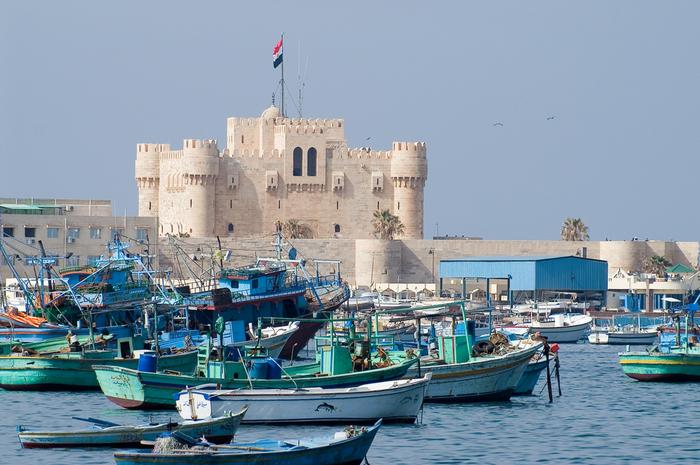 Alexandria is Egypt's largest port and the country's second largest city, located on the shores of the Mediterranean Sea.
Alexandria is Egypt's largest port and the country's second largest city, located on the shores of the Mediterranean Sea.
It is known to the whole world for the destroyed village 1303 Faros flying years, the famous Alexandrian library and the turbulent history of the romance between Kleoparta and Mark Antony, which has just started in this beautiful city.
Currently, Alexandria has approx. 4 million inhabitants, is an important industrial center, commercial and scientific and the place of summer getaways of Cairo residents, wishing to rest on the seashore from the heat and heat.
Alexandria was founded 7 April 332 year BCE. by Alexander of Macedon (according to the design by Dejnochares) on the site of the small town of Rhakotis, which was created approx. 2686 year BCE. Alexander expanded the city and named it after himself, making them a thriving center of commerce under their rule, a center of cultural and intellectual life and the largest Mediterranean port.
It is here that the largest library of the ancient world was established, collecting the works of the most eminent artists of the time, headed by Socrates and Theocritus, it was here that the main center of knowledge and science of ancient times was located. People and scholars from all over the world came here, which made it a cosmopolitan capital of knowledge and culture, but which also became the cause of internal national and religious conflicts.
W III i IV wieku n.e. fights broke out between Christians and the followers of the Greek and Egyptian religions, which ended with the victory of Christians and the becoming of Alexandria at the end of antiquity one of the greatest centers of Christianity in the Mediterranean.
For nearly a thousand years, Alexandria was the capital of Egypt and an important theological center, until v 641 year was conquered by Muslims (it was then that, by order of Caliph Omar I, the Library of Alexandria was burnt) and slowly began to lose its importance. After moving the capital to Cairo and moving to 1517 year ruled by the Turks ceased to count in the then world, i w 1798 year when Napoleon came to Egypt, it was just a small town with only 8 000 residents.
Until the city is depopulated, inhabited mainly by Turks, the plague epidemic contributed greatly, which broke out in the 17th century. After her resignation, many residents moved or started building new houses in the new district, outside the walls of the old one, medieval city.
In the following years, Alexandria gradually began to regain importance, which was largely due to the opening of 1869 year of the Suez Canal. Earlier, however, because from the beginning of the nineteenth century, Muhammad Ali led an intensive expansion of the city, with the goal of making Alexandria a major center of Mediterranean politics with a great port, in which he could further develop the Egyptian navy. In 1818 In the year, the construction of the gigantic palace of Ras el-Tin began, to the east of which a hospital and barracks were built. Rebuilt under King Fuad, the palace is now the seat of the admiralty, and its beautiful gardens are open to the public.
During World War II, Alexandria was still the base of the British navy, and currently is a great tourist center, attracting tourists not only with magnificent buildings and monuments, but also a mild Mediterranean climate, sandy beaches and numerous bathing areas. Light blowing from the sea, a damp breeze brings relief and cooling, which only the people of other parts of the country can envy, in which the summer heat is truly unbearable.
Currently in Alexandria, the second most populous and economically important city in Egypt, we find a modern airport, large commercial port, university and a new library built on the site of the previous one.
The city center is now farther west than it used to be, in the former Roman city, on the foundations of which an Arab city was built in the Middle Ages. The walls of the latter survived in perfect condition until the end of the 18th century, but to this day, little remains of them.
The oldest district of the city, Anfusi, it is located on the isthmus connecting the mainland with the former island of Faros, and was called a Turkish city. Not far from there is the 15th-century Fort Kaitbeja, which was built on the site of the legendary lighthouse of Faros, destroyed in 1326 years by the earthquake. It houses the Maritime Museum and the oldest mosque in the city.